| Virginia Crane, Dr. Manfred Wenner (chair of International Studies), David Roth and an anonymous history professor describe certain liberal faculty members' dissent against the WSU-O disciplinary procedure and administration. - 1.1MB mp3 | |
| Manfred Wenner and Franklin Utech discuss the underground satirical publication The Blade and the problems it caused. - 524K mp3 |
Please click a thumbnail for more detail.
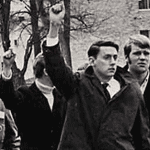
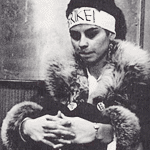
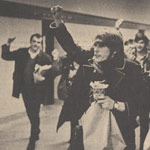
A small but growing faction of the WSU-Oshkosh student body objected strenuously to the black
students' expulsion and the discipline meted out to dissenting faculty members.
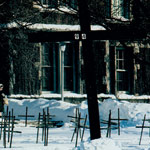
Ninety-four crosses erected on the front lawn of Dempsey symbolized WSU-O students’ dissatisfaction with the Board of Regent’s decision.
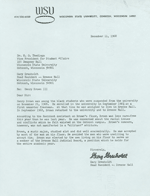
Head resident Gary Gresholdt answered the WSU-O administration's call to provide information about the arrested African American student Henry Brown in the wake of the November 21 demonstration.
For more documentation on Black Thursday, please visit the documents page
The Oshkosh Daily Northwestern applauded the WSU Board of Regents’ decision soon after it was rendered. “Let the rest of the nation note,” it crowed, “that here a stand has been made for law and order, for a restoration of limits to which patience may be extended….A corner has been turned in Oshkosh.” Not everyone agreed, of course. White students at WSU-O—until this time relatively quiet when compared to their protesting counterparts at the UW Madison campus seventy-five miles to the southwest— students awoke to the reality of racial injustice and suddenly felt compelled to speak out against the way the Oshkosh 94 were treated.
By early February 1969 the influence of student protestors had gained so much ground that members of the student government voted in favor of a strike, which would force the university to shut down. President Guiles managed to prevent a strike by promising the WSU-O students a special investigation into the Black Thursday demonstration and allegations that professors in the departments of History, English, Political Science and International Studies who sympathized with the Oshkosh 94 were being fired or intimidated by the WSU administration.
Protests against the expulsion of the ninety black students continued outside of Oshkosh as well. White and black students at WSU-Whitewater, UW Milwaukee and Lawrence College in Appleton had the events of Black Thursday clearly in mind when they waged demonstrations on their own campuses in the months following November 21. The Oshkosh 94 found their greatest source of solidarity among students at UW Madison.
When members of the UW Madison Black People’s Alliance (BPA) approached their campus administration and asked for better treatment and greater respect, they included among their demands: “That the University use all influence with the Oshkosh administration to readmit those students…and failing this [see to it] that they be admitted to the University of Wisconsin next semester without prejudice.” News that the University of Wisconsin was denying admission to three members of the Oshkosh 94—members of the Oshkosh 94 were being “blackballed” at campuses throughout the state of Wisconsin and elsewhere—helped precipitate a week-long student strike on the UW Madison campus the following February.
